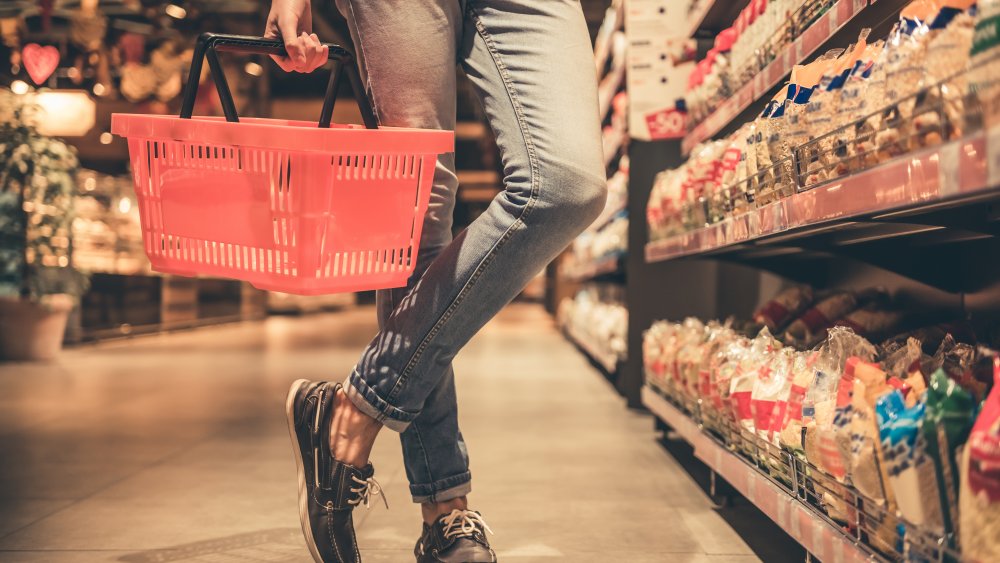What You Never Noticed About Grocery Store Shopping Carts
Trust one of the greatest inventions in the last century to be, at its roots, sexist. In a quest to increase business, supermarket mogul, Sylvan Goldman, designed the first shopping carts in the 1930s in the image of a... baby trolley (via Fast Company). Per Goldman, "When the housewife got her basket full, it was too heavy for her to carry and she stopped shopping." The shopping cart was designed to let her buy more.
This imaginary housewife laughed in Goldman's face. Again, per Goldman: "Most of the housewives decided, 'No more carts for me. I have been pushing enough baby carriages. I don't want to push anymore." It wasn't until Goldman hired attractive actors to push the carts around his stores that people started using them in earnest. Goldman's profits then soared (via Priceonomics).
Bigger shopping carts mean bigger spending
Between the 1930s and the 1970s the size of shopping cart steadily grew. By the 1970s, it became a truth universally acknowledged within university economics departments that the bigger the shopping cart, the more the consumer was likely to purchase (via Slate). They kept on growing. Between 1975 and 2000, the average shopping cart had nearly tripled in size.
A decade later and they were still getting bigger. As marketing consultant, Martin Lindstrom, told Today, between 2009 and 2011, Whole Foods supermarket doubled the size of their carts, after finding that bigger cart sizes induced customers to buy 40 percent more. It's hardly surprising that shopping cart is the single most used vehicle behind automobiles. Supermarkets want you to use them.
How shopping carts affect the speed and expense of your shopping trip
There's nothing unintentional about your favorite Trader Joes. Supermarkets have your buying habits scrutinized to an exact science. They've timed your walking speed, buying habits, and percentage of the store you visit, and whether you use a shopping cart, a basket, or just carry your goods along with you. Want to cut down on your consumption of junk food? Avoid using a basket. As it turns out, the strain that a basket makes on your arm is more likely to get you searching for the instant gratification of a snickers bar (via Time).
If, on the other hand, you want to avoid spending too much time and money on your weekly shopping trips, opt for a basket or nothing at all. According to a 2019 study published in the Journal of Business Research, you'll not only cover more of the grocery store if you have a shopping cart in tow, but — at an average of 0.3 meters a second — you'll also walk around the store at a significantly slower rate. Use a basket, and you'll up your speed to 0.45 meters a second. Go without, and you'll sprint through the store at an average rate of 0.6 meters a second. That's probably why with a shopping cart, you're likely to buy at least 14 items, more than double what a basket user will purchase (around 6.5 items) and roughly 700 percent more than what you'd purchase without any equipment at all (around 2.2 items).


